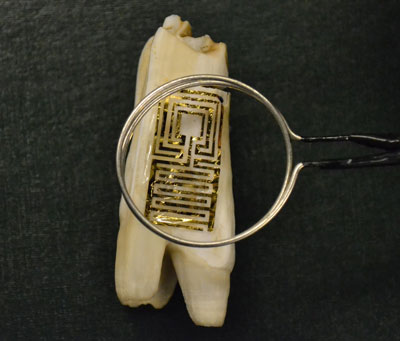Graphene nanosensor tattoo on teeth monitors bacteria in your mouth
Read more: http://www.nanowerk.com/spotlight/spotid=24767.php#ixzz1zJvZls7U
I chose an article by Michael Berger from nanowerk.com. The article is about a new nanosensor that can be fused onto your teeth that can detect contaminents, bacteria, virus's, or the chemical make-up of your food. The sensor can also be used to monitor respiration. The idea seems like a very useful application of nanotechnology to increase survival and health rates. If radiation levels change due to solar activity or chemical/nuclear accidents, the need for clean safe food will increase. This could be the solution.
pathos- the tone is very professional and scientific. The feeling is that of a promising new discovery of a new application. Also the author lightly touches on the fact that the applications of the graphene water-soluble silk printing have far ranging implications.
ethos- in science the master ethic is the quest for knowledge. The ethos here is pushing the frontier of technology and creating new things by combining pre-existing elements or technologies into a new device or scientific concept.
logos- The logic in the article is that a new discovery in science has been successful in its prototypic phase. The logic also is in the explaination for the need of this technolgy, and why people would get tiny circuit boards fused to their teeth. Living in the US at this current time, it might not seem like people would need something like this, but if you think about all the 3rd world and developing countries that could use a
Setting- The setting is at Princeton University for the most part. "A team of scientists, led by Fiorenzo Omenetto at Tufts University and Michael C. McAlpine at Princeton University, have now developed a novel approach to interfacing passive, wireless graphene nanosensors onto biomaterials via silk bioresorption. They have reported their finding in the March 27"
repetition- The specific function of the nanosensor and its applications are re-enforced through repetition. The article describes in further detail the exact specifications as the article progresses. The article could have been compressed, but then the introductory portion of the article would've been combined with the main body of information.
Read more: http://www.nanowerk.com/spotlight/spotid=24767.php#ixzz1zK1N2Hm0

No comments:
Post a Comment